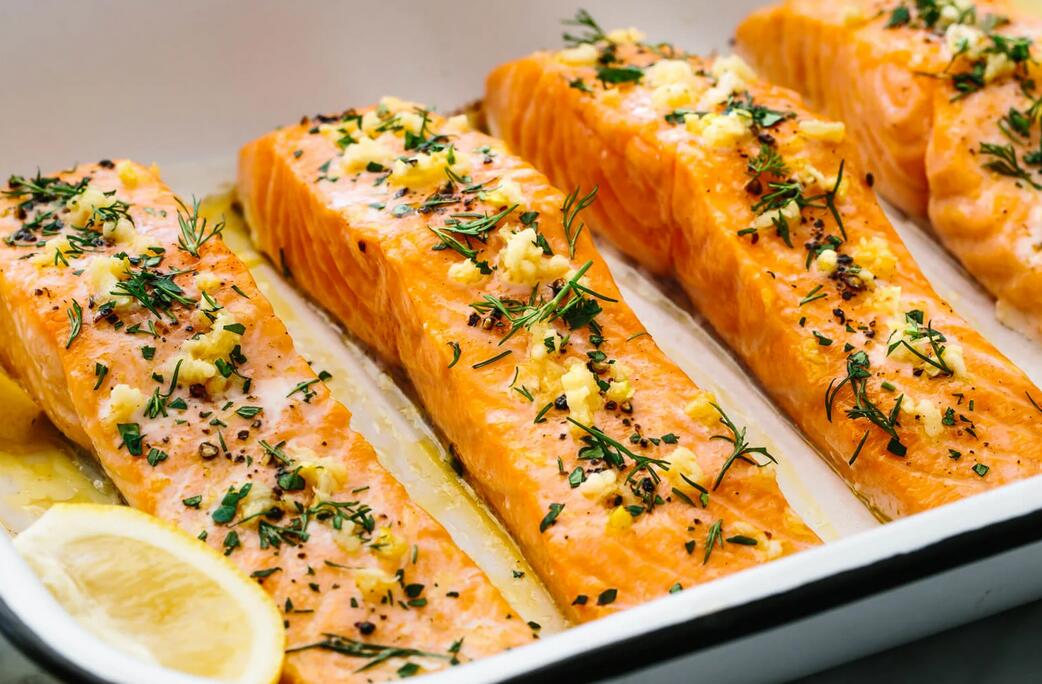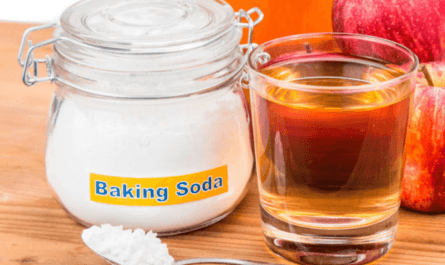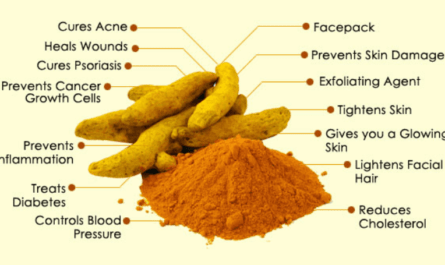Salmon is a delicious, versatile, and nutritious fish that has become increasingly popular in recent years. Its tender, flaky texture and rich, buttery flavor make it a favorite among seafood lovers. In many methods, Cooking salmon in the oven is one of the easiest and most foolproof methods for preparing this tasty fish. In this article, we’ll discuss the process of how to cook salmon in the oven, from choosing the right fish to serving and storing your leftovers. Whether you’re a beginner or an experienced home cook, this guide will provide you with all the information you need.

Choosing the Right Salmon
The first step to a delicious oven-baked salmon is selecting the right fish. When shopping for salmon, look for:
- Fresh, bright-colored flesh: The salmon should have a vibrant, rich color and no signs of dullness or grayness.
- Firm texture: Gently press the flesh; it should spring back and not leave an indentation.
- Pleasant aroma: Fresh salmon should smell like the ocean, not fishy or ammonia-like.
You can choose from several types of salmon, such as Atlantic, Sockeye, Coho, or King (Chinook). Each has its own unique flavor profile and texture. For a milder taste, opt for Atlantic or Coho, while Sockeye and King offer a richer, more intense flavor.
When selecting salmon, also consider the source. Wild-caught salmon is often considered healthier and more flavorful than farm-raised, as the fish are able to swim freely and eat a natural diet. However, responsibly farmed salmon can also be a good choice, especially if it’s raised in low-density pens and fed a diet that mimics their natural food sources.
If you’re unsure about the freshness or quality of the salmon at your local grocery store, don’t hesitate to ask the fishmonger for advice. They can help you select the best fish and even offer tips on preparation and cooking.
Preparing the Salmon
Once you’ve selected your salmon, it’s time to prepare it for cooking. Start by rinsing the fish under cold water and patting it dry with paper towels. If desired, you can remove the skin or leave it on for added texture and nutrients.
Next, season the salmon to your liking. Some simple yet delicious options include:
- Salt, pepper, and lemon: Sprinkle the salmon with salt and freshly ground black pepper, then top with lemon slices.
- Garlic and herb: Mix minced garlic, chopped fresh herbs (such as parsley, dill, or thyme), salt, and pepper, then rub the mixture over the salmon.
- Maple and soy: Combine maple syrup, soy sauce, garlic, and ginger, then brush the mixture over the salmon for a sweet and savory flavor.
- Cajun seasoning: For a spicy kick, mix together paprika, cayenne pepper, garlic powder, onion powder, salt, and black pepper, then rub the blend over the salmon.
- Pesto: Spread a thin layer of your favorite pesto over the salmon for an Italian-inspired dish.
- Teriyaki: Brush the salmon with teriyaki sauce for a Japanese-inspired flavor.
- Honey mustard: Mix together honey, Dijon mustard, garlic, and a pinch of salt, then spread the mixture over the salmon.
Feel free to get creative with your seasonings and experiment with different combinations to find your perfect match. You can also marinate your salmon for 30 minutes to an hour before cooking to infuse it with even more flavor. Simply place the seasoned salmon in a shallow dish, cover it with your chosen marinade, and refrigerate until ready to cook.
When preparing your salmon, consider the portion size. A typical serving of salmon is 3-4 ounces per person, which is about the size of a deck of cards. If you’re cooking for a larger group or want leftovers, plan accordingly and purchase a larger fillet or multiple fillets.
Cooking the Salmon
Now that your salmon is prepped and seasoned, it’s time to cook it to perfection. Preheat your oven to 400°F (200°C) and line a baking sheet with parchment paper or aluminum foil for easy cleanup.
Place the seasoned salmon on the prepared baking sheet, skin-side down (if leaving the skin on). If using a glaze or sauce, brush it over the top of the salmon.
Bake the salmon for 10-15 minutes, depending on the thickness of the fillet. As a general rule, cook the salmon for 10 minutes per inch of thickness. To check for doneness, insert a fork into the thickest part of the fillet and gently twist. The salmon should flake easily and be opaque throughout.
Once the salmon is cooked, remove it from the oven and let it rest for 3-5 minutes before serving. This allows the juices to be redistributed, ensuring a moist and flavorful result.
If you prefer a crispy top on your salmon, you can finish it under the broiler for 1-2 minutes after baking. Keep a close eye on the fish to prevent burning, and remove it from the oven once the top is golden brown and slightly crispy.
For an extra burst of flavor, try squeezing fresh lemon juice over the salmon just before serving. The acidity of the lemon complements the rich, fatty flavor of the fish and adds a bright, fresh note to the dish.
Serving Suggestions
Oven-baked salmon pairs well with a variety of side dishes, making it a versatile meal option. Some delicious serving ideas include:
- Roasted vegetables: Toss your favorite veggies (such as asparagus, broccoli, or cherry tomatoes) with olive oil, salt, and pepper, then roast them alongside the salmon for a complete meal.
- Quinoa or rice: Serve the salmon over a bed of fluffy quinoa or your favorite rice for a hearty and satisfying dish.
- Salad: Pair the salmon with a fresh, crisp salad for a light and refreshing meal. Try a simple green salad with a lemon vinaigrette or a colorful mix of baby greens, cucumber, and cherry tomatoes.
- Pasta: Toss cooked pasta with olive oil, garlic, and Parmesan cheese, then top with flaked salmon for a quick and easy meal.
- Mashed potatoes: Creamy mashed potatoes provide a comforting and indulgent side dish for your oven-baked salmon.
- Grilled vegetables: Fire up the grill and cook some sliced zucchini, eggplant, or bell peppers to serve alongside your salmon for a summer-inspired meal.
- Couscous: Serve the salmon over a bed of fluffy couscous flavored with lemon, herbs, and a drizzle of olive oil.
- Sautéed spinach: Quickly sauté fresh spinach with garlic and olive oil for a healthy and flavorful side dish.
Don’t be afraid to get creative with your side dishes and experiment with different flavor combinations to find your perfect pairing. You can also serve your oven-baked salmon with a variety of sauces, such as a classic hollandaise, a refreshing yogurt-dill sauce, or a spicy sriracha mayo.
Leftover Ideas
If you find yourself with leftover salmon, there are plenty of delicious ways to repurpose it. Some tasty ideas include:
- Salmon salad: Flake the leftover salmon and mix it with mayonnaise, chopped celery, red onion, and fresh dill for a quick and easy salmon salad. Serve it on a bed of greens or as a sandwich filling.
- Salmon cakes: Combine flaked salmon with mashed potatoes, breadcrumbs, eggs, and your favorite seasonings, then form the mixture into patties and fry until golden brown.
- Salmon pasta: Toss flaked salmon with cooked pasta, olive oil, garlic, lemon juice, and capers for a light and flavorful meal.
- Salmon scramble: Add flaked salmon to scrambled eggs along with some cream cheese and chopped chives for a protein-packed breakfast.
- Salmon tacos: Warm up some corn tortillas and fill them with flaked salmon, shredded cabbage, avocado, and a drizzle of chipotle mayo for a tasty twist on fish tacos.
- Salmon fried rice: Stir-fried cooked rice with flaked salmon, peas, carrots, and scrambled eggs for a quick and satisfying meal.
- Salmon chowder: Simmer flaked salmon, potatoes, corn, and celery in a creamy broth for a comforting and hearty soup.
Leftover salmon should be stored in an airtight container in the refrigerator and consumed within 3-4 days. When reheating leftover salmon, be sure to do so gently to avoid drying it out. You can reheat it in the microwave on low power, or gently steam it until warmed through.
Tips for Perfect Oven-Baked Salmon
To ensure your salmon turns out perfectly every time, keep these tips in mind:
- Don’t overcook: Salmon can quickly become dry and tough if overcooked. Use the 10-minutes-per-inch rule and check for doneness early to avoid overcooking.
- Let it rest: Always let your salmon rest for a few minutes after cooking to allow the juices to redistribute, resulting in a more moist and flavorful fish.
- Experiment with seasonings: Don’t be afraid to try new seasoning combinations to find your perfect flavor profile. Salmon pairs well with a wide range of herbs, spices, and sauces.
- Use high-quality ingredients: Investing in fresh, high-quality salmon and ingredients will make a noticeable difference in the final dish.
- Preheat the oven: Always preheat your oven before cooking to ensure even cooking and the best results.
- Use a thermometer: For the most accurate doneness, use an instant-read thermometer. The internal temperature of the salmon should reach 145°F (63°C) at the thickest part.
- Adapt to your preferences: Feel free to adjust cooking times and seasonings to suit your personal taste preferences. Some people prefer their salmon slightly underdone, while others like it well done.
- Consider the skin: If you leave the skin on your salmon, cook it skin-side down to prevent the flesh from sticking to the pan and to achieve a crispy skin.
- Brush with oil: Before seasoning your salmon, brush it lightly with olive oil to help the seasonings adhere and to prevent the fish from drying out during cooking.
- Don’t forget the garnish: A sprinkle of fresh herbs, a squeeze of lemon, or a drizzle of high-quality olive oil can take your oven-baked salmon from good to great.
Health Benefits of Salmon
Not only is salmon delicious, but it’s also incredibly nutritious. Here are some of the health benefits associated with eating salmon:
- Heart health: Salmon is rich in omega-3 fatty acids, which have been shown to reduce inflammation, lower blood pressure, and decrease the risk of heart disease and stroke.
- Brain function: The omega-3 fatty acids in salmon are also essential for brain health, helping to improve memory, reduce the risk of age-related cognitive decline, and protect against depression and anxiety.
- Eye health: Salmon contains high levels of vitamin A and omega-3 fatty acids, both of which are important for maintaining healthy vision and reducing the risk of age-related macular degeneration.
- Bone health: Salmon is an excellent source of vitamin D, which is essential for strong bones and teeth. Vitamin D helps the body absorb calcium, which is necessary for maintaining bone density and preventing osteoporosis.
- Skin health: The omega-3 fatty acids in salmon can help to keep skin moisturized, supple, and protected from UV damage. Salmon also contains astaxanthin, a powerful antioxidant that can help to reduce the appearance of fine lines and wrinkles.
- Weight management: Salmon is a lean protein source that can help you feel full and satisfied, making it easier to maintain a healthy weight. It’s also low in calories and high in nutrients, making it an excellent choice for those looking to lose or maintain weight.
By incorporating salmon into your diet regularly, you can enjoy all of these health benefits while also savoring a delicious and versatile fish.
Conclusion
Cooking salmon in the oven is a simple, healthy, and delicious way to enjoy this versatile fish. By following these guidelines for selecting, preparing, and cooking your salmon, you’ll be able to create a mouthwatering meal that’s sure to impress.
So the next time you’re looking for a quick, easy, and nutritious dinner idea, consider oven-baked salmon. With its endless possibilities for seasoning and serving, it’s sure to become a staple in your kitchen. Happy cooking!
FAQs
What is the best temperature to cook salmon in the oven?
The ideal temperature for cooking salmon in the oven is 400°F (200°C). This temperature ensures that the salmon cooks evenly and develops a tender, flaky texture.
How long does it take to cook salmon in the oven?
The cooking time for salmon in the oven depends on the thickness of the fillets. As a general rule, cook salmon for 10 minutes per inch of thickness at 400°F (200°C).
Can I use frozen salmon for oven cooking?
Yes, you can use frozen salmon for oven cooking. However, be sure to thaw the fillets in the refrigerator overnight or in cold water for about an hour before preparing and cooking them.
How do I know when the salmon is done cooking in the oven?
Use a meat thermometer to check the internal temperature of the salmon. The fish is done when it reaches 145°F (63°C) for well-done. You can also check for doneness by gently pressing the top of the fillet with a fork. If the flesh flakes easily, the salmon is ready.
Can I reheat leftover oven-baked salmon?
Yes, you can reheat leftover oven-baked salmon. Place the fillets in a baking dish, cover them with foil, and bake at 275°F (135°C) for 10-15 minutes, or until heated through. Alternatively, you can reheat the salmon on the stovetop by gently warming it in a skillet with a small amount of oil or butter over low heat.
How long can I store leftover cooked salmon in the refrigerator?
Store leftover oven-baked salmon in an airtight container in the refrigerator for up to 3 days. To maintain the best quality, place the salmon in the refrigerator within 2 hours of cooking and consume it within the recommended timeframe.
Can I freeze cooked salmon?
Yes, you can freeze cooked salmon. Wrap the fillets tightly in plastic wrap and place them in a freezer-safe container or bag. Frozen cooked salmon can be stored for up to 2 months. When ready to eat, thaw the salmon in the refrigerator overnight before reheating.
What are some healthy side dishes to serve with oven-baked salmon?
Some healthy side dishes that pair well with oven-baked salmon include roasted vegetables (like asparagus, broccoli, or Brussels sprouts), quinoa or brown rice, mixed green salads, and light pasta dishes (like lemon pasta or pesto pasta).
How often should I eat salmon for health benefits?
The American Heart Association recommends eating at least two servings of fatty fish, like salmon, per week to reap the health benefits associated with omega-3 fatty acids and other essential nutrients found in salmon.
What are some signs that salmon has gone bad?
If salmon has a strong, fishy odor, slimy texture, or has developed mold, it has gone bad and should not be consumed. Fresh salmon should have a mild, ocean-like smell and firm, elastic flesh. Always store salmon properly and consume it within the recommended timeframe to ensure the best quality and safety.






